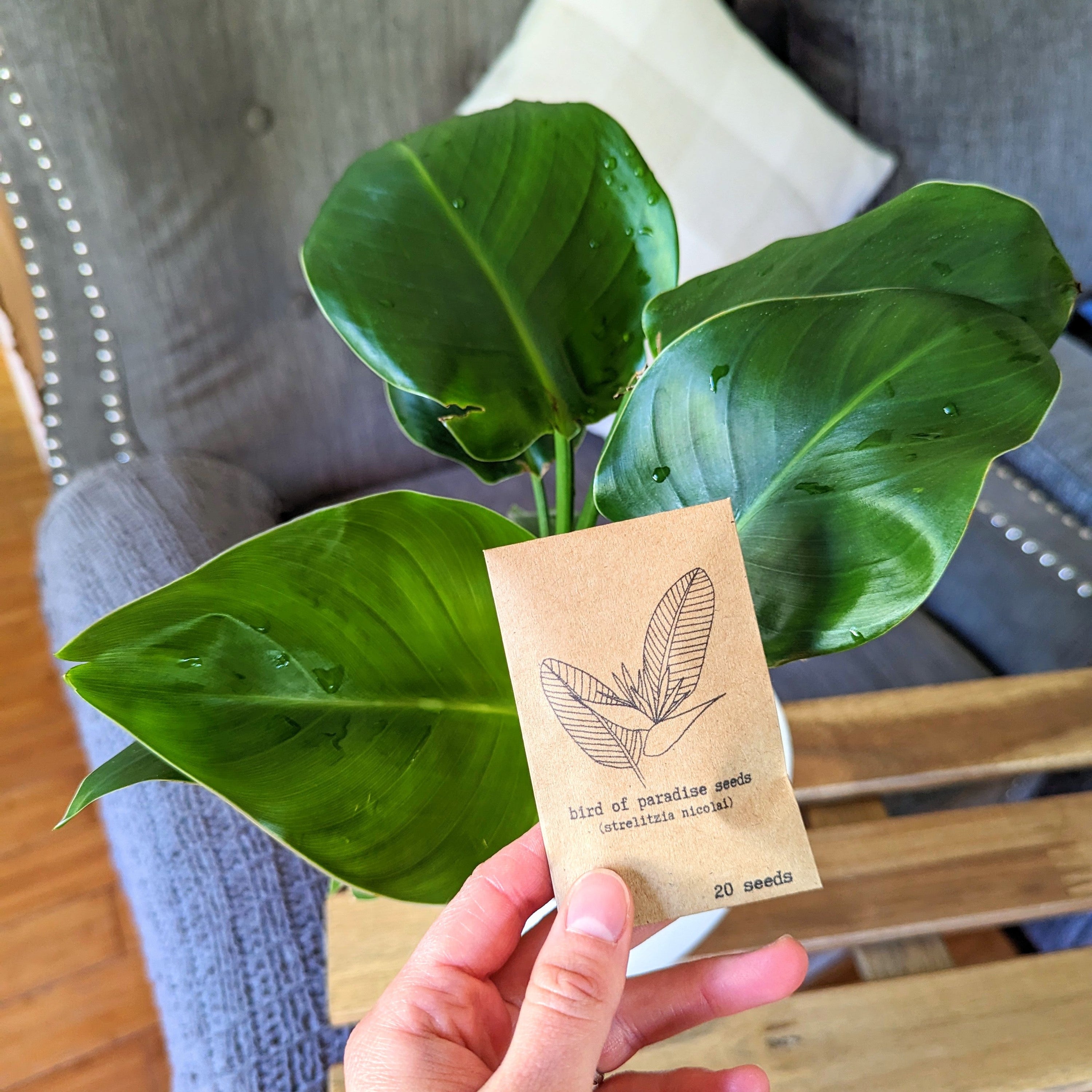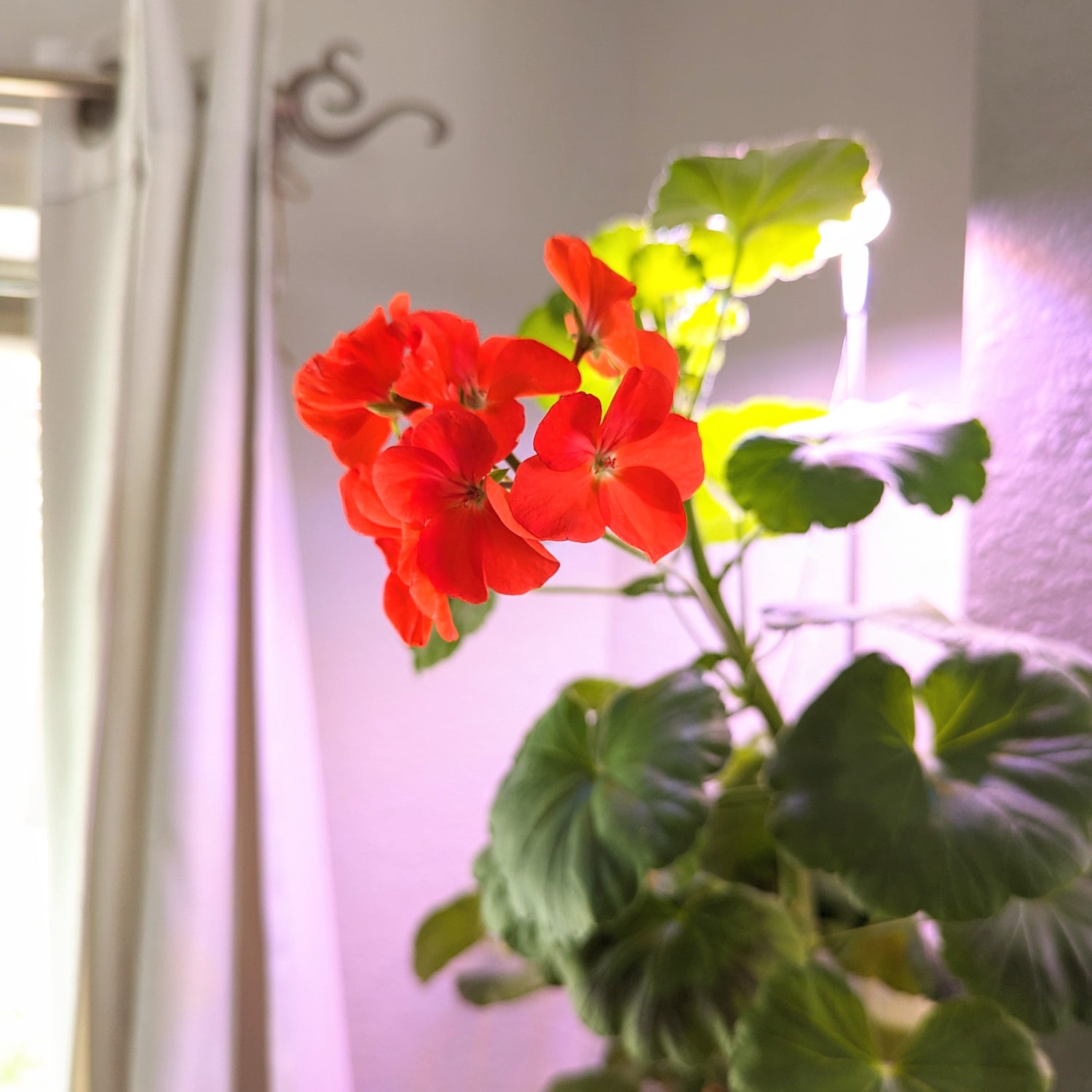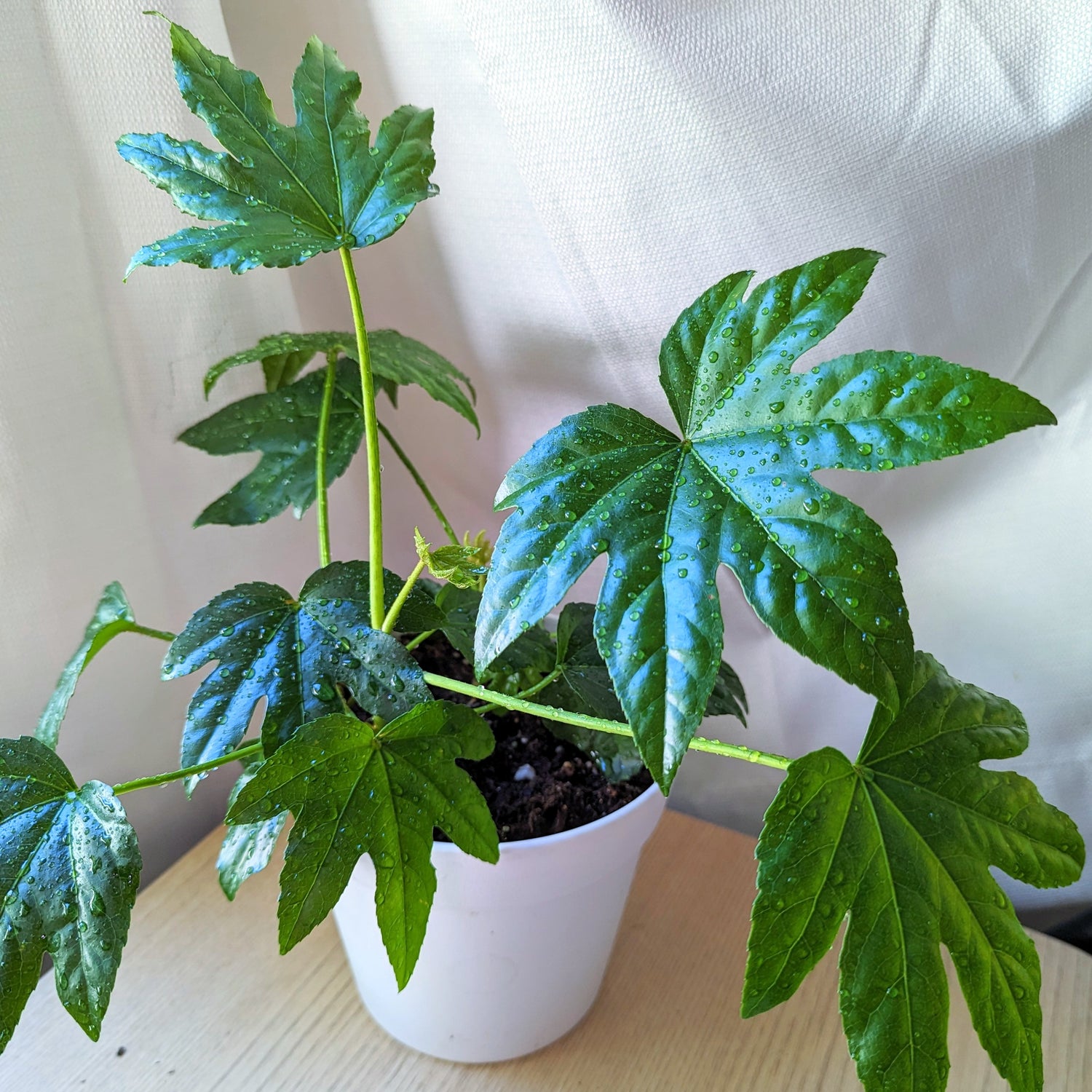Bird of Paradise is a very popular houseplant, sporting beautiful large and lush leaves, and unique tropical blooms. If you live in a warmer climate, you may even see these plants used in landscaping!
About the plants
There are a few varieties available, the most popular being the Strelitzia Reginae, or Orange Bird of Paradise, and the Strelitzia Nicolai, also known as the White or Giant Bird of Paradise.
The Strelitzia Reginae is a smaller variety, only growing to about 4'-6' tall and produce orange flowers, while the Strelitzia Nicolai can grow up to 27 feet in height and produces large white flowers.
They make amazing houseplants, for beginners and advanced gardeners alike, and as you may have guessed from the title of this article- you can grow them from seed!
Strelitzia Seeds
 Strelitzia seeds are easily recognizable, with their tough black outer coating and a clump of orange fluff sticking out of the shell. Characteristic of any seeds with such a tough outer shell, they are pretty tricky to germinate, and can take a few tries to successfully get to sprout(it took me 3 tries to finally get the setup down for these seeds, so be ready to be patient and experiment)!
Strelitzia seeds are easily recognizable, with their tough black outer coating and a clump of orange fluff sticking out of the shell. Characteristic of any seeds with such a tough outer shell, they are pretty tricky to germinate, and can take a few tries to successfully get to sprout(it took me 3 tries to finally get the setup down for these seeds, so be ready to be patient and experiment)!How to grow Strelitzia from seed:
If you're looking to grow these seeds, here are some steps and tips to follow:
0) set aside some seeds and don't plant them all at once- if one setup fails, it's good to have back-ups!
1) Remove that orange fluff! You can pull it out from the shell, it's ok if not all the strands come out.(the seeds can germinate with that fluff still intact, however it does help boost germination rates)
2) pre-soak the seeds in water or 3% hydrogen peroxide for 24 hours
3) These seeds do well with both the tissue germination method and the greenhouse method.
If using the tissue germination method, wrap the seeds in a wet paper towel that you put in a ziploc baggie or tupperware to seal in moisture.
If using the greenhouse method, sow the seeds 1/4"-1/2" deep in moist soil(we recommend coco fiber soil pods like the ones in our shop, but indoor potting mix works,too, as long as it's sterile!) Cover with a humidity dome or ziploc baggie to seal in moisture. You should be able to see condensation on the humidity dome after an hour or so, if not, it's likely not humid enough in the setup.

4) Make sure the soil is moist, but not soggy, otherwise the seeds may rot away or just not germinate.
5) place on a heat mat or warm spot that stays consistently >70F.
6) make sure the seeds are away from direct sunlight. A windowsill with bright, indirect light works, but grow lights are best since temperatures can fluctuate close to a window.
7) The seeds can take up to 6 months to sprout, so don't give up on them! Check the soil/paper towels about once a week to make sure the soil stays moist. If it's starting to look dry, gently add some water. Don't check the setup too often, because it'll cause extra temperature and humidity fluctuations!
In ideal conditions, the seeds can sprout in as quickly as 2-3 weeks, but some just naturally take longer.
Troubleshooting your seed setup:
Here are some common reasons if you're not seeing germination:
1) The most common issues come from moisture levels. If your soil is too soggy, the seeds will rot. If it's too dry(sometimes the soil can look moist, but if you try it with your finger you can tell it's not moist enough, so be sure to check!) the seeds may not sprout or even lose viability. Even with a humidity dome, you'll likely have some water leaking out or just being absorbed, so it's important to check.
2) Is it warm enough? If the temperatures dip below 70F regularly, it may ruin the chances of the seeds germinating. Have a thermometer nearby, or regularly check the warmth of the heat mat just to make sure it's on at all times.

3) No direct sunlight! You can grow herbs and flowers by a sunny windowsill, but tropical houseplants should be kept away from sunlight and only acclimated to some sun once the seedlings already have several leaves.
4) Sometimes soil is the issue. Coconut Fiber soil pods are my favorite medium to start houseplant seeds because it's light and fluffy so it doesn't suffocate the seeds and always draws away any excess moisture in the event of overwatering. Some indoor potting mixes can be too "heavy" and essentially suffocate the seeds, but there's also more of a chance of a mold or pest infestation coming from the soil.
If you do find mold or pests, take out the seeds immediately and toss them into hydrogen peroxide to sterilize the seeds. Then put the seeds in fresh soil or paper towels and keep trying!
I hope this guide is helpful! If you have grown the seeds, let us know in the comments what setup you used and how long it took for the seeds to germinate.
Don't stop growing from here! Here are some other seed guides that you might find useful:
- How to Grow Ficus Altissima from Seed





3 comments
Just wondered how long you leave the seeds in the plastic bag using the tissue germination method.
I’m glad this post was able to help :) Don’t hesitate to reach out if you have any other questions!
so pleased read this and about the coconut fibre is what I am going to use, so thank you for the info.